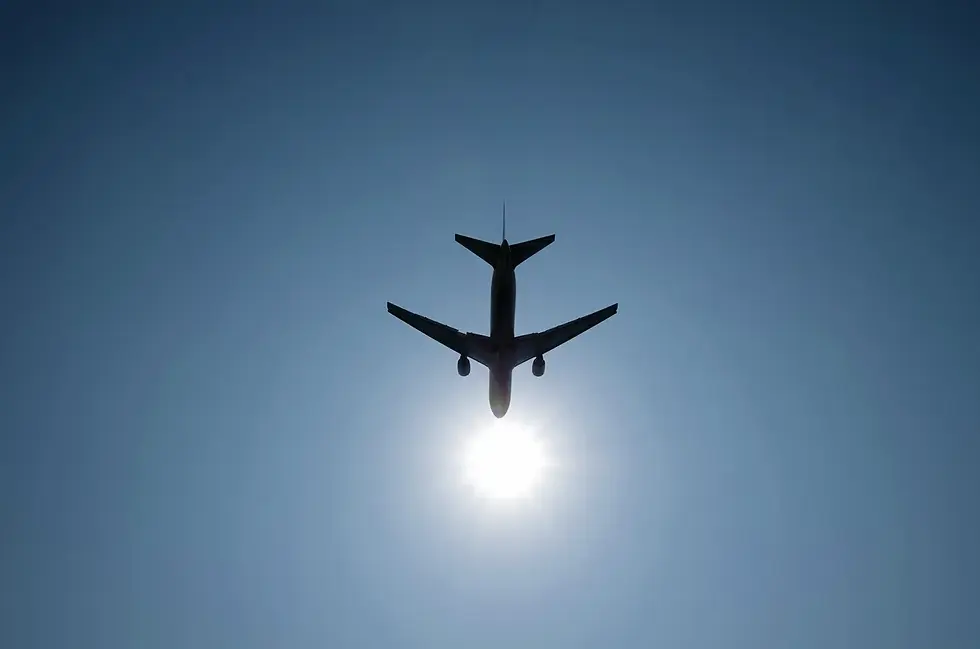"Flying cars" are almost here. Just ask the FAA.
- Matthew Scott
- Oct 28, 2021
- 3 min read
"Where's my flying car?" is kind of an inside joke in technology. Ever since the Jetsons cartoon from the early 1960s featured 'aerocars', the flying car seemed to be just around corner in our future. Now, "Flying cars" are here.
A handful of eVTOL - electric Vertical Take-Off and Landing - craft show the emerging consensus on design from different companies. Engineers have finally broken free of the compromises of previous designs (see below).

The fixed wing tilt-rotor (FWTR) design in particular has already created a whole new category of aviation: urban aerial mobility.
Consider this: at least four different companies have attracted investors and are flight-testing eVTOL designs that look very similar to each other. Joby's Micro, Archer's Maker, Beta Aircraft's Alia 250C, and Vertical Aerospace's VA-X4 each have a wing, v-tail, electric motors that tilt between vertical and horizontal, and seat 2-5 people.
I have no idea what intellectual property is shared between these four different companies, but these designs make sense in aeronautical engineering terms. Having a wing adds a safety factor and extends range over other VTOL designs. Even eHang recently showed a prototype using this tilt-prop + wing design. The specific propeller shape and size significantly reduce noise over other designs.
Until now, urban aerial mobility has been defined by today's helicopter designs, most of which are 60 years old, like the Jetsons. The typical jet turbine-powered helicopters used for urban aerial mobility today are: i) loud (90-100 decibels at take-off & landing), ii) slow (190km/h/120 mph cruising speed), iii) thirsty (140 litres/hour), iv) polluting, and v) expensive (operating costs start at $2,500/hour for the smallest, and purchasing costs well over a million new). Helicopters do have a decent safety margin: a skilled pilot can turn a full engine failure into a soft landing in the right circumstances using the autorotation technique.
Outside of helicopters, there have been many failed attempts to merge the magic of flight with mundane features of a family car. Most are variations on the "plane that can also drive on roads" theme. Slovakia's Aeromobil is the latest iteration on this tried and tired formula. The mechanical realities of what makes a good car and a good airplane are fundamentally opposed. The bare minimum of what makes a plane safe and comfortable to fly makes for a very ungainly car - wings have to fold away into a very long tail that makes the car hard to drive. To say nothing of the weight, propulsion, and control system differences.
So if the plane-that-can-drive-on-roads formula is doomed, what about drones for urban air mobility? Can't we just scale up cool drone technology? eHang, KittyHawk, Volocopter, and SkyDrive are working on essentially scaled-up drones that can fit one or two people. Apart from being difficult to scale any larger, three very big compromises come into view with this design: forward speed, range, and safety. Current drone technology does a great job of vertical flight through fixed electric fans that direct air downward. But without wings, moving forward requires tilting the entire craft and scavenging some of the lift into forward thrust, but there's not much of it so most of these craft are slower than yesterday's helicopters. Without wings, the rotors have to generate all the lift and are constantly running near maximum output, draining batteries. The safety concerns are even bigger: if a drone's power fails or runs out, only a heavy ballistic parachute can save a drone from certain doom. Finally the designs from eHang, KittyHawk and SkyDrive seem to put the embarking passenger dangerously close to the blade arc. Shredded legs isn't a good look for flying cars.
The four eVTOL mentioned above can already fly faster and more quietly than helicopters without burning fuel and likely costing much less. Like drone designs, they don't need as much space for take off and landing, but can currently fly 150 miles or 240 kilometres on one charge, much further than most drone designs. Once these get FAA certified, the eVTOL future looks bright. Tilt-rotor fixed wing (FWTR) craft are faster, cleaner, quieter, and safer than the alternatives. Your flying car will soon be ready.







Comments